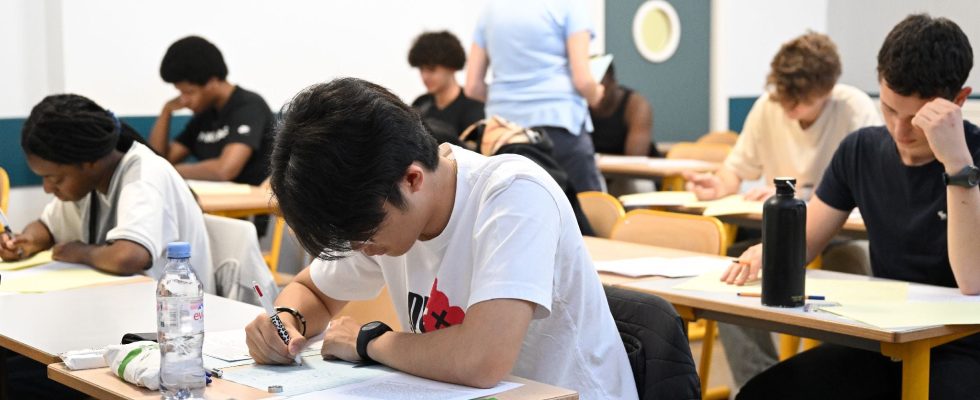Raise the level of students, particularly in math. The objective of the Minister of National Education, Gabriel Attal, is clear and France’s poor results in the latest OECD Pisa survey imply a rapid reaction. To achieve the “electroshock” necessary for middle school, level groups will be created “from the next school year” in 6th and 5th grade for French and mathematics, and “from the start of the September 2025 school year” in 4th and 3rd grade.
At primary level, “new programs” will be put in place, starting “next September, with classes from kindergarten to CE2”. In maths, the minister wants to draw inspiration from the so-called Singapore method, a country which dominates the Pisa ranking, “by anticipating, for example, the learning of fractions and decimal numbers from CE1 class”.
A long-term education
The so-called “Singapore method”, designed for students from CP to sixth grade, has been supported since 1980 by the Singapore Ministry of Education. Jean-Michel Jamet, school teacher, explains it in an educational guide for teachers published at La Librairie des Écoles in 2011. It is based on three fundamentals: modeling, the “concrete-imagery-abstract” approach and verbalization.
The first, modeling, consists of representing a concept or a mathematical situation through a diagram. Unlike a simple illustration, this diagram can be applied to all situations which present the same characteristics. By systematically applying this procedure, students must understand the invariants of the problems, which is the first step towards abstraction. The teacher then asks the students what diagrams to make and how it relates to the problem. The goal is for students to master this modeling technique, which then becomes for them the basis of all mathematical reasoning.
Moving from concrete to imagery and then from imagery to abstraction is truly the heart of the Singaporean method which aims for the gradual integration of mathematical notions. Students are first invited to imagine concrete situations from everyday life before these situations are schematized on the board or using the textbook. At this time, the links and important elements of the concept are explained. The final step is to use mathematical symbols through abstraction. Throughout learning, students are encouraged to verbalize their thoughts and justify their reasoning by thinking out loud. The sessions must follow one another “quickly” and with “dynamism” since any delays in understanding can be overcome thanks to the following lessons which frequently return to the key concepts from different angles.
A method that is part of a unique educational system
This method is already applied in 70 countries including the United States, Israel, the United Kingdom and Brazil. Advocated by MP and mathematician Cédric Villani, this teaching is already provided in several French schools. However, if the method proves to be extremely effective in Singapore, it should not be seen as a miracle solution, according to Jean-Michel Jamet, school teacher at the International School of Monaco and author of‘an article from the journal of the Grenoble Institute for Research on Mathematics Teaching entitled “The Singapore method: tip of the Singaporean iceberg” and which moderates the excitement around this approach. The professor highlights several crucial differences such as the training of teachers or the structure of the education system.
The learning of mathematics is in fact part of a system very different from ours. There are more teachers and they face reduced student numbers. Teachers also benefit from very significant continuing training throughout their careers as well as a very present culture of collaborative work. Thus in Singapore, in 2019, 39% of teachers serve as tutors for their junior colleagues compared to 4% in France. The culture of success is not the same either: the considerable amount of work and the personal investment required of the teacher are sometimes difficult to assume and the extreme selectivity of the Singaporean system favors the selection of teachers based on high criteria of mastery of academic knowledge.
The development of classes also differs from the French system by the creation of different school curricula according to the learning abilities of the students, starting from elementary school, with the explicit objective of allowing each student to reach their potential. highest learning. For example, some students may benefit from more time to complete their education, which was not previously the case with a single course. The policies pursued for more than forty years in Singapore have finally made it possible to develop a unique education system, very different from that in force in France. The method of learning mathematics is therefore part of a specific framework and its importation must not cause us to lose sight of the structural dimension of educational issues.
